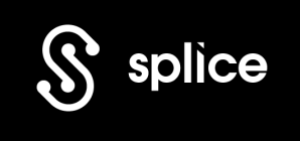Recently we had some guys from Splice.com visit NYU to show off their intriguing new product. (It’s basically GitHub for musicians.)
The Splice guys demonstrated the power of networked collaboration with an exercise they call “musical shares.” Everybody starts a track in some DAW (we used GarageBand.) You work on your track for ten minutes. Then you share it with the person to your left, and you receive the track from the person on your right. You work on your neighbor’s track for ten minutes. Then you pass left again and spend ten minutes on another track. You repeat until you run out of time. Finally, you listen to your original track and experience the appropriate delight, or surprise, or horror. It’s somewhere between Exquisite Corpse and Telephone, and it’s a lot of fun.
Musical shares seemed like a no-brainer music technology classroom activity, so I tried it out with my students at Montclair State. Rather than sharing files online, the students simply stood up and switched seats in the computer lab. Everyone was intently quiet while we worked, aside from some mutters of frustration now and then. I wasn’t sure how everyone was feeling about the exercise until it ended, and we all went to listen to our transformed tracks. Suddenly the room was alive with excited discussion. Understand that this class meets at 8:30 in the morning, and the students are usually comatose. The 10:00 section enjoyed it tremendously as well. I jokingly suggested that we do musical shares for every class meeting for the rest of the semester, and the class was totally into the idea.
A music therapy major pointed out that this kind of round-robin creativity is a commonly used art therapy technique, good both for group bonding and for people who have control issues. She’s seen it used in a visual context many times, but not in a musical one.
I’ve been thinking about how we could extend this exercise in the future. It would be great to spend more time on it, give everyone twenty or thirty minutes per round rather than ten. I like the tight time constraint because it keeps second-guessing to a minimum, but it would be good to be able to give some polish to the ideas. It would also be good to devote enough time to make sure that everyone works on everyone else’s track, and to have a listening session afterwards. In a class with fifteen people, that would require a lot of time, but it feels like it would be worth it.
For more advanced students, there are some Splice-specific additions I could see making. If everyone was careful to save after every edit, then you could step through the process that everyone took to transform your track. You could pick a point in the track’s evolution that you like particularly and fork it off into a new piece of music. The possibilities are really endless.


I am going to try adapting this idea to the middle school level with my technology class. We are using a mock-up garageband program called Mixcraft (someday we will get those Apples!). I think adding this social element to the creative process may be key to opening up some students at younger age levels.
Splice really made this easy for us. Before Splice, my students did the same as yours and rotated around the room. Apart from collaborating on a track, here’s a variation I used: the first student at a station would create one scene in Live with four tracks – drums, bass, melody and pad/chords, audio and/or MIDI. Then when the students rotate, the next student would duplicate the scene and create a single variation for each clip. The 3rd student would variate the scene created by the 2nd student, and so on. By the end, each student would have 20-30 variations of a single idea that they alone could use to build a track. It was interesting for them to see/hear how their original idea morphed over time with the help of their peers, as in a game of Telephone. I remember one kid went super minimal and showcased the progression of the variations in an interesting way. I’m interested in hearing what else you’re students make with Musical Shares, and cheers to Splice.
This is such a good idea. Next semester I’m teaching an Ableton class at Montclair State and I will definitely be using your version of the exercise.